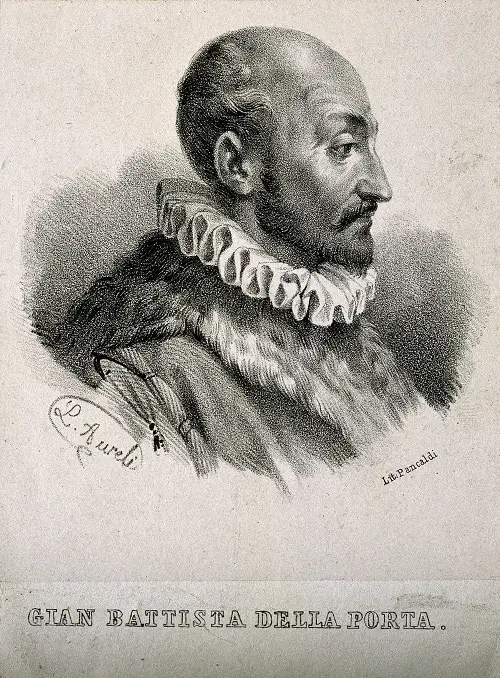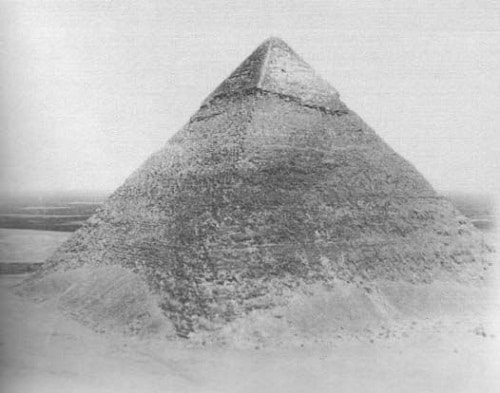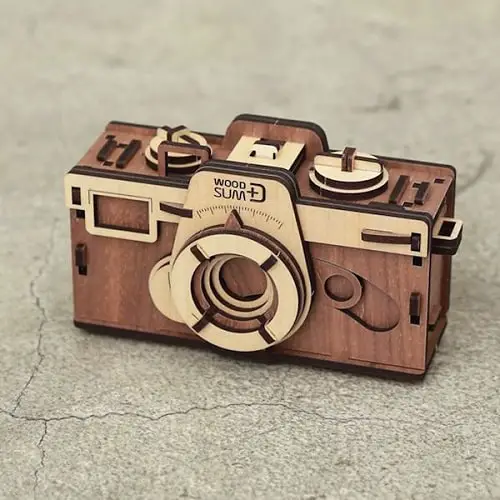The pinhole camera has a special place in photographic history as it is the first kind of camera that has ever been invented.
You might be asking yourself, when was the pinhole camera invented?
Photography, as we know it, has been around for less than 200 years. However, its evolution at that time has been phenomenal.
The pinhole camera is also known as a dark chamber or camera obscura. It’s an optical imaging device shaped like a chamber or closed box.
Essentially, it’s a light-proof box with a small hole on one side and photographic paper or film on the other.
It’s gone from a crude process involving caustic chemicals and unwieldy, awkward cameras to the simple sophistication of creating and sharing images instantly.
The pinhole camera started out as a tool of optical scientists and astronomers who were trying to understand things like the wavelength of light and solar eclipses.
By the 16th century, they would also become popular with artists and painters.
When was the pinhole camera invented? A brief history
While photography as we know it may be relatively new, the first idea of the camera was used to study optics, not to take and create images.
In fact, Ibn Al-Haytham, also known as Alhazen (945-1040) was an Arab scholar who is credited as the first person to have studied how humans see.
Alhazen is credited with inventing the camera obscura as we think of it.
Even though there are references to the camera obscura as early as 400 B.C.E. in China and in Aristotle’s writings around the year 330 B.C.E.
These references are purely philosophical, and there’s nothing to suggest they actually built a device to test their theory.

Rather, Aristotle talks about light falling through an opening between a tree’s leaves that give a perfect projection of the sun on the ground.
Aristotle noticed that while the opening between the leaves was not perfectly round and irregular, the image on the ground was.
2,400 years ago, Aristotle couldn’t explain this phenomenon. It would be 900 years before someone could.
Alhazen put three candles in a row and put a screen with a small hole in the wall and the candles.
What he noticed was how the images were formed by means of the small holes.
The candle to the right made an image to the left on the wall. From this, he was able to deduce the linearity of light.
In the centuries following Alhazen’s studies, the pinhole technique was used to study sunlight projected from a small aperture by optical scientists.
Aside from science, the camera obscura was used for astronomy and, once a lens was fitted, it was also used as a drawing aid.
A tool that amateur painters and artists found most useful.
Most notably, Leonardo da Vinci in his notebooks drew over 270 diagrams of camera obscure.
Da Vinci died in 1519, and it wouldn’t be until 1979 that his notebooks were deciphered and translated.
Papal astronomers, in 1580, used a pinhole and a noon-mark in the Vatican’s observatory in Rome because they wanted to prove to Pope Gregory XIII that the spring equinox should be on 21 March, not 11 March.
Two years later, in 1582, the pope corrected the Julian calendar by 10 days, which created the Gregorian calendar (the calendar we use today).
Who invented the pinhole camera?
This is hard to pin down. Some have argued it’s Alhazen because of his experiments in the 10th century.
Others thought it was a scientist from Naples, Giovanni Battista Della Porta (1538-1615).
This was due to his description of the lensless (pinhole) camera obscura in his “Magia Naturalis” (1558). However, we now know he in fact didn’t invent it.

The term camera obscura (literally “darkroom”) was coined by Johannes Kepler (1571-1630).
During his time the term had come to mean a tent, box, or room with a lens aperture used by artists to draw a landscape.
The benefit of camera obscura for artists is that it made the image more focused and brighter at a certain distance.
Then in the 1620s, Johannes Kepler invented a portable camera obscure.
Soon after that, the camera obscures as drawing aids were found in many sizes and shapes.
And then, in the 19th century, there were several camera obscura made at a large scale for places of entertainment and education.
The first photographs using a pinhole camera
In the 1850s, Scottish scientist Sir David Brewster was one of the first people who made pinhole photographs.
And he was the first person to use the word pinhole in the context of taking photos. Well, he wrote it as “pin-hole” in his 1856 book “The Stereoscope.”
This is different from the way it was used by James Ferguson in a 1764 lecture; Joseph Petzval’s term “natural camera” in 1859; or Deslandres and Dehor’s term they proposed in the late 1880s, stenopaic camera.
Also read:
Here’s a List of 20 Inventions in the 1920s [Inventors Included]
The oldest pinhole photographs to still exist are those made by Flinders Petrie (1853-1942).
He was an English archeologist, who took pinhole photos during his excavations in Egypt in the 1880s.
Petrie’s camera had a simple lens in from of the pinhole.

Impressionists and pinhole photography
The Impressionist painting movement in the 1880s had started to exercise some influence on photography.
And over the next two decades, different tendencies and schools of thought began to develop in photography.
By the 1890s pinhole photography became popular in Europe, Japan, and the United States.
In London alone, 4000 pinhole cameras (known as Photomnibuses) were sold in 1892.
They seem to have been the late 19th century’s equivalent of the disposable camera.
However, none of these cameras have been preserved in-camera collections anywhere.
Meanwhile, in America, a company invented the disposable pinhole camera.
It consisted of a pinhole in tinfoil, a dry glass late, and folding billows.
Another American company sold its version which came with chemicals, trays, six dry plates, ruby paper for safelight, and a print frame.
It wasn’t until the middle of the 1960s that there was a revival of sorts with pinhole photography.
This was happening most notably in Italy, Germany, and the USA.
Then the ‘70s saw its popularity increase in Europe, whereas in America it looked like its popularity was waning.
The pinhole camera today
There is a Worldwide Pinhole Photography Day, the first one was held on the 29th of April 2001, and has been held every year in April since then.
Pinhole photography is still a thriving art form, with many enthusiasts establishing exhibitions of pinhole photography as well as groups on social media to discuss the art form, its history, and the different types of pinhole photography.
One of the most popular uses, to this day, of the pinhole camera, is for looking at solar eclipses, and other events that involve looking at the sun.
Obviously, looking directly at the sun is bad. And with only a few materials, kids can make their own pinhole camera to stare at the sun without doing any serious damage.

There are several pinhole cameras available such as the 4×5 Rigby camera, the 8×10, and 4×5 Zero Image pinhole cameras as well as the Pinhole Blender, Omniscope Anamorph, and the Merlin cameras amongst many other reputable brands.
Final thoughts
In conclusion, we firmly believe that the invention of the pinhole camera was an incredible milestone in the history of photography.
It was a brilliant innovation that is celebrated even today.
Ultimately, the story of the pinhole camera should serve as a reminder to all of us that the inventors of today can only build upon what those who came before them have already accomplished.
And with that in mind, we can move forward with assurance that the same will be true of each new discovery and invention we make down the road into tomorrow.
Until next time, thanks for reading!

